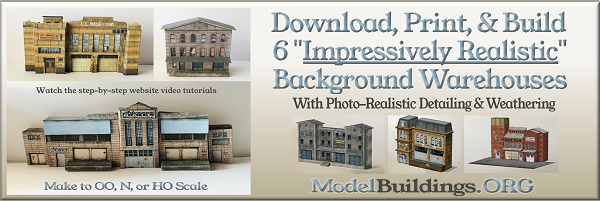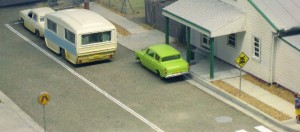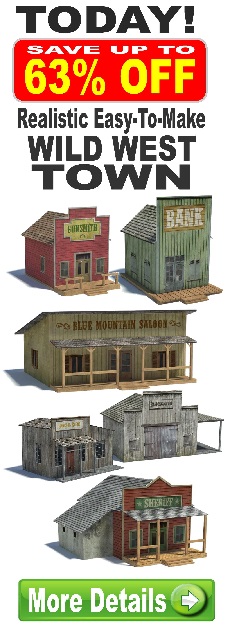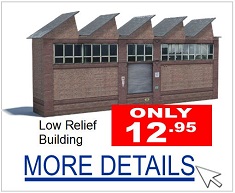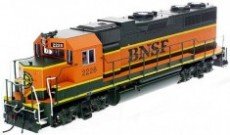Everything on model trains, model railroads, model railways, locomotives, model train layouts, scenery, wiring, DCC and more. Enjoy the world's best hobby... model railroading!
Beginner’s Guide To Model Trains
 If you are new to model trains, consider investing in diesel locomotives as some in hobby claim they run better than similarly priced steam engine counter parts. Others in the hobby might disagree. You have the option of cargo and passenger cars, with complete kits available.
If you are new to model trains, consider investing in diesel locomotives as some in hobby claim they run better than similarly priced steam engine counter parts. Others in the hobby might disagree. You have the option of cargo and passenger cars, with complete kits available.
The rails come in various options, but many prefer nickel silver as it ensures better conductivity.
Scenery can be a big investment if you don’t make most of it yourself… it’s fun making scenery!
Always invest in the best engine as you can, and then go on to build the required landscape. The idea here is to create a perfectly running model railroad, otherwise all your efforts on creating a classic model might go in vain.
There are several excellent resources available for beginners (and experienced) hobbyists, including the “Best Selling” Model Train Help Ebook. Model train enthusiasts can also benefit greatly from access the numerous resources inside the online Model Train Club.
Model Trains NZ – Model Railroading Alive and Well In New Zealand
 Model train hobbyists in New Zealand follow a wide range of scale sizes and most websites make certain that locomotives, cars and tracks are available throughout the country. However, if you are looking for a track size that is regarded as standard, HO scale is a great option for you as it is widely popular.
Model train hobbyists in New Zealand follow a wide range of scale sizes and most websites make certain that locomotives, cars and tracks are available throughout the country. However, if you are looking for a track size that is regarded as standard, HO scale is a great option for you as it is widely popular.
There are model train clubs throughout both the North and South Islands of New Zealand. Established clubs include: the North Shore Model Railway Club Inc, Tauranga Model Railway Club Inc, New Plymouth Model Railway Club Inc, Wairarapa Railway Modellers Inc, Hutt Valley Model Railway Club Inc, Nelson NZR Modellers, Christchurch Model Railway Club Inc, and the Otago Model Engineering Society Inc. If you’re a Kiwi (New Zealander) reading this blog posting and would like to add further information, then please add your comments to this posting.
Ask A Model Railroading Question
 If you have a model railroad question you would like answered, then use the link on this blog to submit your question. If you word your question carefully and provide some useful details, then chances are someone reading this blog will offer a solution. Only the best question will be published. Please spell check your question before submitting it to the blog moderator for approval.
If you have a model railroad question you would like answered, then use the link on this blog to submit your question. If you word your question carefully and provide some useful details, then chances are someone reading this blog will offer a solution. Only the best question will be published. Please spell check your question before submitting it to the blog moderator for approval.
The link to submit your question is on this page.
Tips On Buying Model Train Storage Boxes
 Shopping for model train storage boxes is not a very difficult job because most companies that focus on this sector have high quality foam used in the inside of these boxes to protect your cars from damage. However, a few things that are not taken into consideration while buying model train storage boxes can result in forever disappointment. To begin with, it is important to buy a storage box that stores your cars in the STANDING POSITION! This prevents leaked oil spoiling the paint job and costly decals.
Shopping for model train storage boxes is not a very difficult job because most companies that focus on this sector have high quality foam used in the inside of these boxes to protect your cars from damage. However, a few things that are not taken into consideration while buying model train storage boxes can result in forever disappointment. To begin with, it is important to buy a storage box that stores your cars in the STANDING POSITION! This prevents leaked oil spoiling the paint job and costly decals.
If you are on a budget, you can you can use those inexpensive plastic containers you’ll see in most discount stores and line them with foam. Another option is to construct some shelves and store your trains behind glass to keep them away from the dust.
Why To Use Diagrams For Designing Model Train Circuits
 It is essential to make use of diagrams in the design of model train circuits because a diagram can help you to do the job with no errors and in the unfortunate event of a faulty circuit, you can go back and refer to the diagram to diagnose the issue. Designing own circuits is recommended only for advanced users because thousands of diagrams for circuits can be found on the internet. Make sure that the color codes for resistors, flashers and electrical supply etc., are accurate from user comments and your own common sense.
It is essential to make use of diagrams in the design of model train circuits because a diagram can help you to do the job with no errors and in the unfortunate event of a faulty circuit, you can go back and refer to the diagram to diagnose the issue. Designing own circuits is recommended only for advanced users because thousands of diagrams for circuits can be found on the internet. Make sure that the color codes for resistors, flashers and electrical supply etc., are accurate from user comments and your own common sense.
4×8 Layout Ideas
Rob sent in a request for advice and asks:
“Right now I do not have a layout. I am in the process of building one. What I need is some ideas of layouts. I am limited to space and as of right now all I can have the layout on is a 4×8 board.”
Add your comment.
Wiring Scheme to Detach/Reattach to Train Set
Mike wants advice from readers and asks:
I am constructing a 5×10 foot O scale layout with TCC that will be set onto a 4×9 foot dining room table, with a separate power/control free standing console that would be detached and stored separately. What equipment would provide best connectors, reliability and value…and how best to be done? The layout would have some switches, and a few operating devices such as signals. Nothing fancy…just getting my grandkids into playing with trains at a young age.
Add your comment if you can help Mike.
Model Train Electronics Selection Tips For Beginners

Some toggle switches have a spring loaded return to center switch, which can make them suitable for operating point motors. You simply pull back for a moment to operate the points in one direction, and forward for the other.
Choosing model train electronics components must be done with caution because wrong decision-making not only cost you money, but chances are that you will end up with a substandard railroad that needs constant maintenance.
Make sure that your model train electronic components are the correct ones to do the job.
Repairing faulty electronic component is a bigger pain than installing a new one and this must be kept in mind.
Model Train Lights – How Are They Different?
 Model train lights are not entirely different from their ancestors except for a few features such as energy efficiency and longevity, thanks to advancements in technology. Most model train lights of today uses LED bulbs, which are far more energy efficient and brighter than filament bulbs, and they are also much more energy efficient. It is recommended using LED lighting wherever possible as it is an investment that can last for several years.
Model train lights are not entirely different from their ancestors except for a few features such as energy efficiency and longevity, thanks to advancements in technology. Most model train lights of today uses LED bulbs, which are far more energy efficient and brighter than filament bulbs, and they are also much more energy efficient. It is recommended using LED lighting wherever possible as it is an investment that can last for several years.
There are several excellent LED resources in the members area of the online Model Train Club.
Great Model Railway Scenery Ideas For Better Railroad Landscape
 If you are into model railroading and have been for a while, you will be aware of the importance of using great sceneries as a part of your design plan. However, if you are a beginner, don’t worry, here are 3 tips that will help you in the process!
If you are into model railroading and have been for a while, you will be aware of the importance of using great sceneries as a part of your design plan. However, if you are a beginner, don’t worry, here are 3 tips that will help you in the process!
1. Choose A Theme – There are many ways to go about this. There are fans of American West that have set up their railroad map entirely based on the late 18th to the early 20th century.
2. Budget – Some themes are expensive compared to others (a rural landscape with several tunnels is a great example) while others are relatively cheap. Stick to a plan that can stay within your budget.
3. Select A Map – Building your railroad based on a map is an absolutely fantastic idea as it will bring perfection to your railroad design.
Lots more ideas in the Model Train Scenery and Layout Construction Ideas downloadable book.
Tips For Constructing Your Layout In Modules
A modular train layout can be an excellent idea, especially if you want to move house, or exhibit it at a model train show. This helpful video shows how to correctly align track between modules.
Watch the full tutorial in the “Members Area” at the Model Train Club
Making Roads and Sidewalks For Your Layout
John (a regular contributor) has kindly sent in this helpful article on making roads and sidewalks for a layout:
Despite the common misconception that roads are black, they are actually gray in color. Macadam appears black as its first put down or the road is resurfaced, but it quickly turns to gray and should be represented as such on a train layout. There are many products available in hobby shops for roadways, but they can also be made by hand, as long as size and scale are always crucial elements.
To make a roadway, first plan it out. Roads go somewhere, and there is an “in” and “out” off the layout, though they may be one and the same. Once your road is placed, paint it a medium-gray color and let it dry. Then it is time to add the white and/or yellow stripes if they are being used. A good place to get these stripes is in map stores that offer colored tape in various sizes.
Realism should be added to a road, which always sports some kind of spill. I model the late-1950’s on my small N-Scale layout, and while the classic vehicles for that time period are fantastic to say the least, some of them always seemed to leak something. To model gasoline, oil, and transmission spills and leaks, wait till the gray paint is dry and then brush on a wash of flat black paint in certain places. If you add too much or the road doesn’t look realistic, wipe the wash off completely while it is still wet and start over.
Sidewalks and curbs add much to a city or rural scene, and are available through a hobby shop or can be made with items around the house, heavy cardboard is one of them. The sidewalk is a concrete color, as is the curb, and should show usage. An excellent way of doing this is offered by Robert Anderson, owner of this website, who recommends dusting on baking soda while the concrete color paint is still wet, which makes the sidewalk look weathered. Another weathering technique when the paint is dry is to make small, very shallow cuts with a hobby knife to simulate cracks. Using the same wash as for the roads, brush it on and wipe it off, and the cracks in the sidewalk will show clearly. Curbs can be scuffed up by tires, or by pedestrians who have something “undesirable” on their shoe.
Doing these tasks can be time-consuming, but it is time well spent. Whether we model a prototype or specific time period, anything that approaches realism will enhance the areas in which our train(s) run, and increase the fun of model railroading.
Are Family Members Supportive Of Your Interest In Model Trains
The results of the latest poll are in and are published below:
Question: Are Family Members Supportive Of Your Interest In Model Trains?
- Yes they are very supportive (46%, 181 Votes)
- Most of the time they are (26%, 103 Votes)
- They tolerate it (20%, 80 Votes)
- The pets get more attention (8%, 29 Votes)
I guess that’s good news as around 72% of family members are supportive most or all of the time.
Fleischmann Deisel Locos With Decoders
Please add your comment if you can advise Michael who asks:
“I have two HO Fleischmann deisel locos that have had decoders fitted from scratch. Both of the decoders have stopped working. How do I test to find out if the locos still work without taking the decoders out of the locos which were fitted by a friend about three months ago, who I do not see any more?”
Add your comment to this posting.
Model Railroad Tunnels – How To Create A Tunnel For Your Model Railroad
Instead of buying a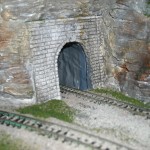 ready-made tunnel for your model railroad, consider making your own customized tunnel. To make a tunnel all you need to do is to bend chicken wire into the shape of a tunnel and wrap it all over with plastic sheet. Now, cut newspapers into 1 inch wide strips and dip it in colored plaster slurry. Cover the chicken wire frame completely with the help of this soaked plaster paper strips and with the help of a modeling plaster mold the shape of a mountain over this plaster. Once you have allowed this to dry completely, paint the mountain according to your railroad theme and add surrounding accessories like rocks, dirt, grass, stones etc.
ready-made tunnel for your model railroad, consider making your own customized tunnel. To make a tunnel all you need to do is to bend chicken wire into the shape of a tunnel and wrap it all over with plastic sheet. Now, cut newspapers into 1 inch wide strips and dip it in colored plaster slurry. Cover the chicken wire frame completely with the help of this soaked plaster paper strips and with the help of a modeling plaster mold the shape of a mountain over this plaster. Once you have allowed this to dry completely, paint the mountain according to your railroad theme and add surrounding accessories like rocks, dirt, grass, stones etc.
How To Avoid Model Train Derailments?
 Make no mistake about it; model train derailments can sometimes go really bad and several months’ of your hard work can go down the drain if some basics have not followed. Operational error and the failure to follow basic instructions are two common reasons for model train derailments but sometimes, cleaning up the mess can be fatal and plenty of money should be spent on repairing. Make sure that you slow down your train gradually and bring it to complete stop before shifting tracks. It is also a great idea to have periodic inspections done on the rails.
Make no mistake about it; model train derailments can sometimes go really bad and several months’ of your hard work can go down the drain if some basics have not followed. Operational error and the failure to follow basic instructions are two common reasons for model train derailments but sometimes, cleaning up the mess can be fatal and plenty of money should be spent on repairing. Make sure that you slow down your train gradually and bring it to complete stop before shifting tracks. It is also a great idea to have periodic inspections done on the rails.
Separation of the Tracks
Pau from Spain has a question for garden railway enthusiasts:
Hello, I’m new in this world of the trains and I would like to know what’s the minimum separation of the tracks in the G scale? I would like to know this information because I’m designing a workshop of trains which tracks are in parallel inside of the workshop.
Add your comment here.
Model Train Wheels Changing Guide For Beginners
Model Train Wheels needs regular inspection to ensure its functionality because a faulty wheel can sometimes cause your coaches to overturn, drawing further damage and such problems can be expensive and sometimes irreplaceable if your engine is a custom-made one. There are different types of wheel diameters available in stores, the larger ones being popular with older models. Your focus should be on getting metal wheels over plastic because metal wheels are less prone to accumulate dust and do not produce as much friction as a plastic wheel. If you are looking for a significant wheel overhaul, always consider replacing the entire train’s wheels to metal from plastic or start with one or two coaches.
